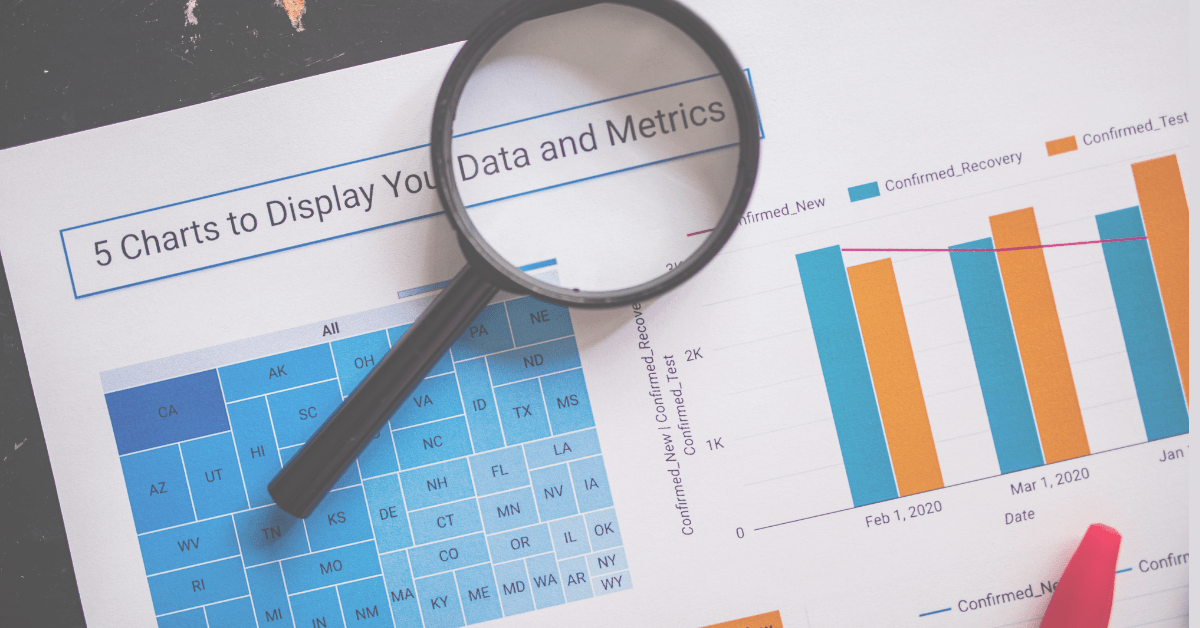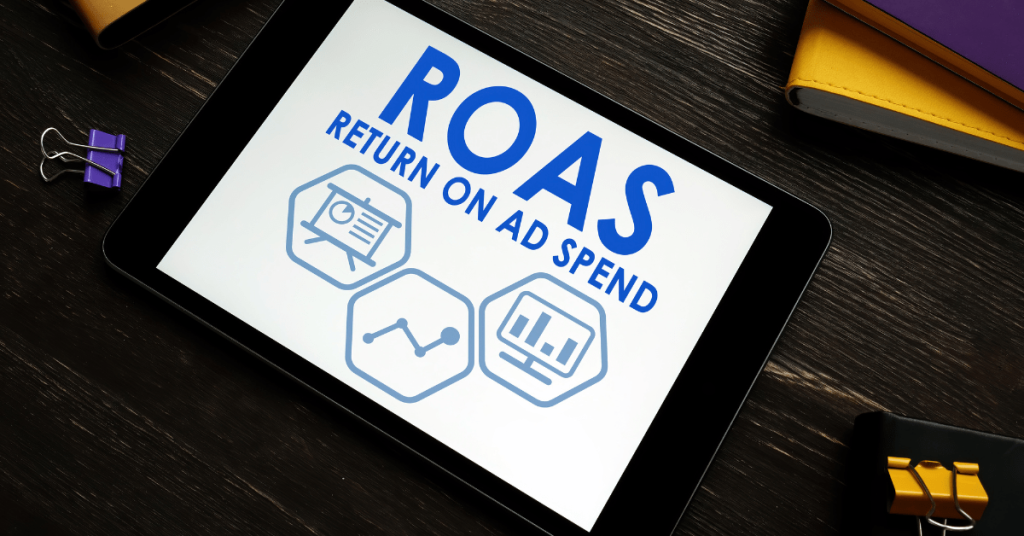
INTRODUCTION
Marketing teams face constant pressure to deliver results and prove that budgets meet expectations. The clear connection between spending and revenue is both important and critical to keeping programs funded. Return on ad spend is a key metric that advertisers use to measure how much revenue is generated for every dollar spent on advertising. Using Google Analytics 4 as a tool, marketers take steps like importing ad costs, customizing reports, and surfacing GA4 data to track ROAS effectively.
A first-party data platform enhances the user journey across different platforms. Marketing source data such as click IDs and UTM parameters connect campaign actions seamlessly. Cookies, page views, conversions, form fills, phone calls, and live chat inquiries are all valuable methods to showcase the real impact of marketing efforts. These insights help businesses make smarter budget decisions in Google Ads by focusing on essential metrics. Analyzing campaigns and understanding ROAS is crucial to identify what’s working and what requires adjusting.
Advertisers calculate and apply strategies to improve ROAS and measure the overall effectiveness of their advertising campaigns. Calculations involve dividing the total revenue by the amount spent, often expressed in pounds. For example, spending £100 to generate £500 results in a performance ratio of 5:1 or 500%. Evaluating and comparing metrics like Conv. Value / Cost, percentage values, 500/100, and £5 provide deep insights that guide smarter marketing strategies and stronger campaign outcomes.
WHAT IS ROAS IN GOOGLE ADS?
Understanding ROAS in Google Ads is crucial for advertisers. Many beginners find ads overwhelming, especially when calculating the particular return on campaigns. ROAS, or Return on Ad Spend, offers a clear perspective on how well your campaigns are performing. You can refer to it as a metric that shows how much revenue is earned compared to the budget spent. Whether you post manually or run automated campaigns, tracking without errors is key. Predicting results, avoiding delay, and knowing what you need at each stage can help advertisers walk through the process with ease.
In Google Ads, ROAS calculation is simple but requires complete focus. You compare the revenue to the cost by dividing the returns. This bottom line shows if your investment was profitable. It works across multiple channels, paid ads, and various advertising efforts. Looks can be deceiving, so track every metric used. Whether you are running a SaaS company or a small blog, knowing how to use ROAS correctly will guide you in making the right decisions. Highlights from your data can further improve strategy and bring more accurate results.
Marketers often invest capital with the aim of generating profitable returns. ROAS helps identify the relation between spending and revenue. You can determine terms, even in dark situations, and measure gross revenue. For PPC campaigns, it is effective in showing how efforts impact thousands of dollars earned. Pouring budget into acquiring new users without knowing your ratio can disturb your marketing plan. This is why acquiring and retaining customers is crucial. It is significant to track the percentage of returns and ensure the marketing initiative is great and sustainable.
For businesses, ROAS is more than just numbers. It reflects the making of smart investment decisions, the generating of income, and the acquiring of valuable customers. Every effort, from advertising to generating leads, is related to how much is generated back. When you measure, compare, and use ROAS effectively, you ensure that your money is spent wisely, your campaigns are profitable, and your marketing efforts make a real impact.

How to Calculate ROAS in Google Ads
ROAS is crucial for determining gross revenue by taking into account all the expenses related to a campaign. This includes ad charges, operational costs, and freelancers’ costs. The total $1 spent is a metric for determining how to spend advertising money. For example, $1,500 a month on display advertisements can bring an audience who clicks to buy $7,000 from a web store. Display ads can have an ROAS of 4.67.
PPC results vary based on the client’s click-through rate. A $12,000 revenue with an investment of $4000 means an average ROAS of 3. To calculate, divide revenue by investment, i.e., $12,000 / $4000. The average mentioned here proves how campaigns can waste time and energy if the ROAS is less. Google Ads makes it straightforward to calculate this ratio.
In Google Ads, the format is simple. Set the percentage, multiply by 100, and note the results for various campaigns. Manual calculation can be tedious and time-consuming. Fortunately, the Google Ads account lets you navigate to the Campaigns tab. From there, choose a column, select modify columns, and create a custom column with a name and description. Use the +Metric option and formula with Conv., value, and cost. These easy steps automatically change the data to show the ROAS. This method works for display ads, PPC, or any campaign type. It ensures accurate tracking of spending, investment, and revenue without missing any detail.
Why ROAS is Important for Google Ads Campaigns
ROAS, or Return On Ad Spend, is a crucial metric for calculating gross revenue while excluding every expense incurred during a Google Ads campaign. This includes ad charges, operational costs, and freelancers’ fees. It helps advertisers determine how effectively their money is being spent and whether their campaigns are generating profitable results. For instance, spending $1,500 a month on display advertisements can result in $7,000 in sales from a web store, giving a clear picture of the campaign’s success in digital marketing.
In PPC advertising, ROAS can reveal valuable insights into campaign performance. A client’s click-through rate, combined with the revenue generated, allows advertisers to calculate the ratio of return. For example, earning $12,000 from a $4,000 investment produces an average ROAS of 3. This number shows whether the ad investment is delivering value or leading to wasted time, budget, and energy. High ROAS figures indicate a healthy marketing ROI, while lower numbers highlight areas that need optimization.
Google Ads makes ROAS tracking straightforward. By using built-in tools, advertisers can easily calculate the percentage, multiply by 100, and compare results across various campaigns. Navigating to the Campaigns tab, modifying columns, and adding a custom metric with the Conv. value and Cost formula ensures that revenue and spending data are automatically updated. This efficiency not only saves time but also reduces manual calculation errors, making ROAS a reliable guide for ad budget allocation, conversion tracking, and overall growth planning.

What is a good ROAS for Google Ads?
The key question regarding a good return on ad spend (ROAS) doesn’t have a single correct answer. In reality, it varies from one business to another, depending on the industry they operate in. It is dependent on the type of industry in which a business operates. When it comes to Google Ads, each campaign can have a different effect on the return generated from advertising spending. For instance, an awareness campaign may result in a fairly low number of conversions. The ratio can vary, and Google’s data shows the average is 2:1 per dollar in digital advertising revenue.
It is stated that results highly depend on the companies, and marketers believe a 4:1 value is strong to aim for. This solid target provides room for creative use of the budget. It also offers the possibility of better growth. A definitive view comes from the variety of factors, including specific goals and the general nature of the ads. A higher ratio is considered ideal because it indicates generating more investment returns.
For example, a 5 ROAS is generally excellent. Always remember that this metric helps evaluate effectiveness in the right context. As part of a broader marketing strategy, the goal is to achieve strong performance. Experts recommend that eCommerce brands follow CRO tips or consider hiring an agency to reach that level.
Key points to consider for a good ROAS:
- Important metric for Google Ads success.
- Dependent on the type of industry and business that operates.
- Awareness campaigns can result in fairly low conversions.
- The average ratio by Google’s data is 2:1 per dollar in digital advertising revenue.
- A 4:1 value provides room, a creative budget, and a better possibility.
- Higher ratios indicate generating stronger investment returns.
- Example: 5 ROAS is generally excellent.
- Part of the overall marketing strategy to achieve high results.
- eCommerce brands should follow CRO tips or think about hiring an agency.
Common Mistakes When Measuring ROAS
- Not tracking all conversions in Google Ads, including form fills, purchases, calls, and events, which causes inaccurate performance data.
- Ignoring customer lifetime value (LTV), lowering the probability of understanding the true return on investment.
- Comparing ROAS without profit margins, which affects bidding, budgeting, and targeting decisions.
- Failing to integrate analytics tools like Google Analytics or tracking software, missing valuable, real-time insights.
- Overlooking campaign channels and ad formats, limiting audience reach, and reducing placement effectiveness.
- Not adjusting targeting for audience groups, lowering ad relevance and click-through rates.
- Poor optimization of landing pages, website speed, headlines, calls-to-action, and layouts, which decreases conversions.
- Skipping keyword research and ignoring high-intent search terms, resulting in lower engagement.
- Not defining clear goals or focusing on audience behavior, creating a weak advertising strategy.
- Forgetting to test ad combinations across locations and devices, missing opportunities to improve revenue.
ROAS vs ROI
Return on Ad Spend (ROAS) and Return on Investment (ROI) are key performance metrics for marketers running advertising campaigns. Both measure revenue, cost, and profit but in different ways. ROAS is easier to calculate and focuses on advertising efficiency, while ROI considers net profit after cost, goods sold, and allocated operational cost. This difference in methodology determines how companies and organizations assess campaign success.
Marketers maintain a note to assign cost to sales generated from advertisements. The accounting department applies a formula to compute ROI, including ad revenue, cost of goods, and operational expenses. ROAS is easier for optimizing ad spend promptly, especially in pay-per-click (PPC) or Google Ads campaigns. Organizations often use ROAS as a primary criterion for advertising decisions and budget allocation.
A company may face issues in assigning profit to specific advertising campaigns. The methodology depends on accounting processes and books. Processing sales information requires determining which items were sold from ads. ROI demands computing profit with a detailed methodology, while ROAS simply tracks revenue generated from marketing efforts. For digital marketing teams, ROAS is faster and simpler to compute.
Key differences include:
- ROI measures profit, cost, goods sold, and allocated operational cost for campaigns.
- ROAS focuses on revenue generated from advertising and PPC performance.
- ROI requires the accounting department, strict methodology, and detailed records.
- ROAS is easier for determining ad performance in Google Ads and Facebook Ads.
- ROI involves computing profit using a fixed formula and sales data.
- ROAS is a primary criterion for marketers optimizing advertising spend.
Conclusion
Google Ads calculating is a straightforward procedure and an essential marketing metric to determine campaign profitability. Optimizing landing pages, implementing bidding strategies, and refining audience targets can improve ROAS. Struggling ad spend can be managed with experts who help. Snowball Creations is a digital agency that primarily focuses on paid channels to make them lucrative. Use the contact form to increase and elevate success.
Return on Ad Spend (ROAS) is a metric used to measure the effectiveness of advertising campaigns. Every company should define its goal. High-margin companies can generate profit easily, while businesses with lower operating margins need a higher ROAS to avoid losses. Using the right program to compute results through analytics is important.
Choose the right model and tool for tracking. Ensure the technology calculates and provides an accurate estimate. This helps spot opportunities and improve outcomes in campaigns.
FAQs
Q1. What is ROAS in Google Ads?
ROAS (Return on Assets Sold) in Google Ads is an essential marketing metric used to determine campaign profitability. It shows how effectively your advertising spend generates revenue.
Q2. How can I improve my ROAS?
You can improve ROAS by optimizing landing pages, implementing effective bidding strategies, and refining audience targeting. Working with digital marketing experts, like Snowball Creations, can also make paid channels more lucrative.
Q3. Why is calculating ROAS important?
Calculating ROAS is important because it helps assess the efficacy of advertising campaigns. It enables companies to set clear goals, avoid losing money, and choose the right program or analytics tool for accurate tracking.
Q4. What is a good ROAS goal for my business?
The ideal ROAS goal depends on your company’s profit margins. High-margin enterprises can generate profit with lower ROAS, while businesses with weaker margins require higher ROAS to remain profitable.
Q5. Which tools can help calculate ROAS?
Tools like Google Analytics can compute ROAS accurately, provided the technology is set up correctly. Choosing the right model and tool ensures accurate estimates and helps spot improvement opportunities.


